15 Instructional Strategies Examples for Effective Learning in 2023
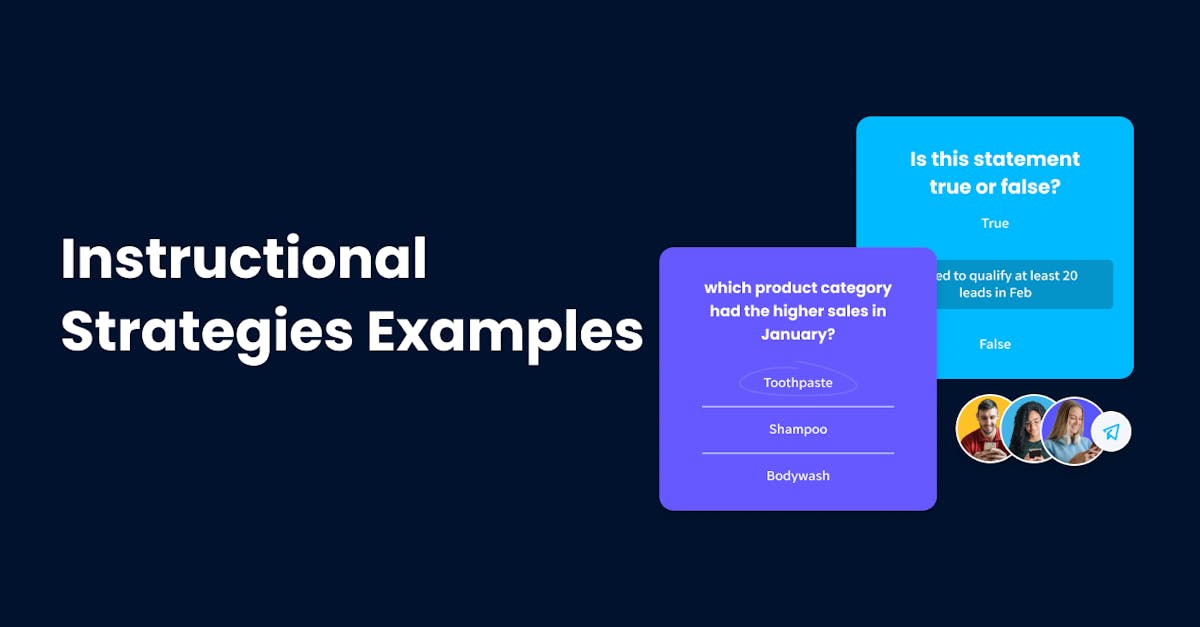
Educators, researchers, and subject matter experts have studied effective instructional strategies that’ll help learners be more engaged, productive, and ultimately successful. And often, effective workplace teaching strategies are neglected. That’s why employees usually imagine work training to be boring and dragging.
But in this article, we’ll explore instructional strategies examples that we’ve learned from research and first-hand experience to help you train your teams better.
What are instructional strategies?
Instructional strategies refer to the methods, techniques, or tools that help learners succeed in learning. In simple terms, it’s all about finding solutions to learning problems.

It’s important to understand that effective training isn’t just about becoming a better teacher or trainer—it’s more about helping participants become productive learners. Since every learner is different, it’s a good idea to have a good grasp of different instructional strategies to achieve better learning outcomes.
There’s no one-size-fits-all solution because as people, we have different learning styles. Think of a learner who is a reader and a verbal learner. They learn effectively by reading whatever kind of material and then having a great conversation with someone about it. Your team members might be visual learners and learn primarily through graphs, slides, or videos. Instructional teaching strategies take all of these factors and more into consideration.
Now that we know why learning strategies are important, let’s take a look at this list of instructional strategies. You can also take a look at our infographic of the most popular examples of instructional strategies to get all the important details without any hassle!

1. Microlearning
Microlearning is an innovative learning strategy that breaks down complex information into digestible bite-sized chunks. These chunks are essentially highly targeted lessons to aid knowledge retention. It’s not just about making big lessons shorter, but it’s also about using visuals and gamification to make learning interactive and fun.
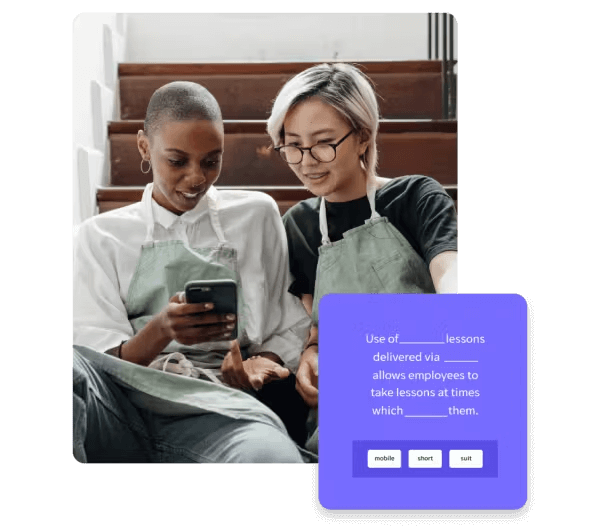
Learning solutions like EdApp offer microlearning courses on a wide range of topics for different kinds of workplaces. And let’s emphasize accessibility. One of the core principles of microlearning is accessibility.
This means that courses are accessible through mobile devices and can be taken at the learner’s pace. This has proven to be effective for jobs with hectic schedules like front-line work, retail, and manufacturing.
Make learning easy and accessible today with EdApp. Sign up for free.
2. Resource speakers
Bringing in resource speakers is also a great instructional strategy example to consider. It’s an ideal way to bring in knowledge from other fields to help your team develop in different aspects of work. Plus, it’s a good investment to learn directly from subject matter experts, professionals, and thought leaders.

Another great thing about setting up talks with resource speakers is the discussions. You can set up Q&A portions where your team can ask questions for even more learning! It’s always great to switch up the instructional formats with interactive portions.
And if you’re not up for face-to-face talks, there are hundreds of resource speaker content all over the internet that’s available to deliver to your teams. For example, there are TED talks on just about anything you can imagine. Queer Eye’s Karamo Brown even has an amazing online course on Diversity, Equity, and Inclusion that he teaches himself easily accessible on EdApp.
3. Blended learning
Blended learning is the combination of face-to-face learning with online learning. The term has been a buzzword since the start of the pandemic, especially when so many teachers and educators have been experimenting with different instructional practices. But it’s proven to be effective even after the pandemic.

Hybrid learning and communication have become the norm not only in schools but in all aspects of our lives. It’s also been studied quite extensively since then, with researchers finding the best ways to make online and physical learning work.
A study shows that while technology makes communication efficient, learners still value real-time interactions with instructors and peers. Technology can also get overwhelming, so the study concludes that elearning tools need to be much simpler to be effective.
So, if you’re planning to use blended learning for your workplace training, make sure you use simple but effective learning tools while balancing face-to-face interactions with teams.
4. Instructor-led training
Instructor-led training is one of the most common teaching strategies examples. You can even call it traditional, but in no way are we implying that it’s ineffective. What makes instructor-led training effective is that your teams will be directly learning from people with expertise and experience. Learners can ask questions about their knowledge of specific topics. There’s so much you can learn directly from a person that you can’t get from resources online.

Instructor-led training also allows learners to step into the shoes of an expert in the field. It’s just more reliable, that’s why a lot of online learning solutions have also integrated instructor-led training in videos.
Instructors can offer proper demonstrations for skilled-based training like machine handling and equipment safety. This is also cost-effective because there’s someone in your workplace who can lead a training session.
5. Gamification
We mentioned gamification earlier, so we’ll talk about why it’s such an effective instructional strategy. Gamification is when you add gaming elements like quizzes, leaderboards, badges, and rewards to make learning fun and engaging. While studies are continuing to see the long-term effectiveness of gamifying learning, it still proves to engage and motivate learners to start training.
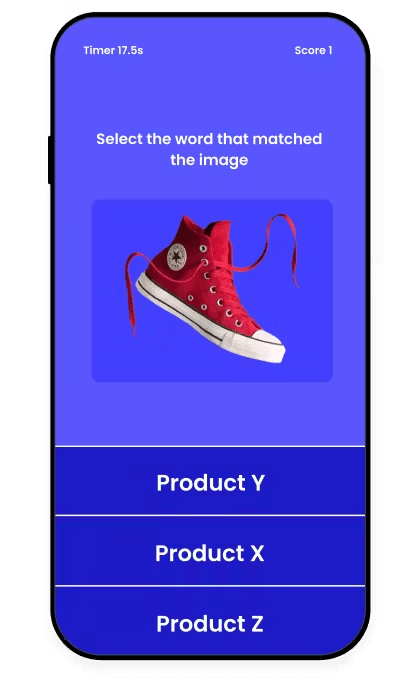
Most elearning solutions out there offer gamification with their learning materials and courseware so be sure to find the right fit for your learners. Our tip for using gamification is to make sure the game elements are relevant to your learning materials. Don’t use quizzes just for the sake of adding quizzes, make sure you’re effectively using knowledge checks to better aid knowledge retention.
6. Social or peer learning
They say that experience is the best teacher for a reason. What better way to learn about your job than from your peers and leaders? Social learning is an instructional strategy that fosters a culture of sharing learning experiences through open discussions and feedback. Ask any employee, more likely than not, the first person they’ll ask a question about work to is a coworker or teammate.

Encouraging social learning sets the foundation for collaboration, which in turn creates opportunities for a future project for your organization. A lot of learning platforms already integrate social learning as a feature, leveraging your existing pool of experts as part of your learning strategy.
7. Webinars
Like other virtual learning strategies, the webinar has found its way to be one of the most used instructional strategies in the age of hybrid learning. Don’t dismiss this strategy yet, because often we think of webinars as awkward and dragging, but honestly, it doesn’t have to be. Webinars can bridge a global audience to a local conversation. Wherever you are in the world you can talk to and ask real-time questions to experts.

Finding and providing webinars to your teams allows you to expand their horizons and be part of conversations they’d otherwise not have. Webinars are also usually recorded so you can archive and revisit them during your team’s own time.
8. Hands-on training
As a practical person, I find that applying the knowledge you’ve I’ve learned in training is the best way to truly absorb information. Adults need to know why they’re learning a new skill for them to learn. It’s important to let your learners know the value of the topics you’re training them in because they won’t learn otherwise. That’s why laying down the objectives and learning outcomes before any kind of training is important.
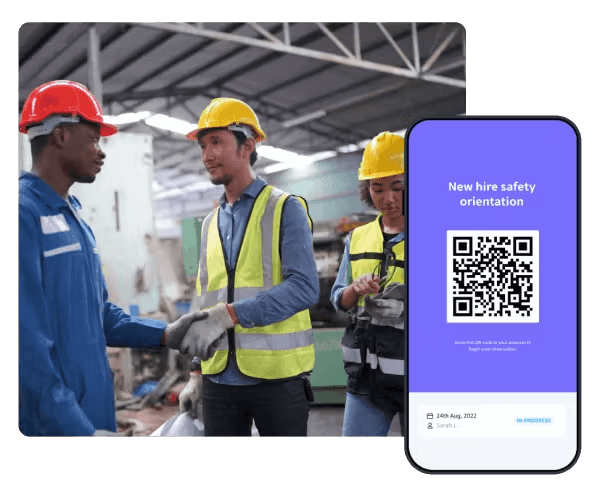
Role-playing simulations and collaborative learning is cited as effective hands-on training. But, what you need to do is let your teams try their work out with space for failure. That’s why you train because there’s little consequence. People tend to work ineffectively when they’re afraid to fail. But once an employee fails in training, they’ll have the confidence to do their job much better. So create room and integrate empathetic hands-on training into your programs.
9. Spaced repetition
Spaced repetition is a learning strategy where crucial lessons are repeated at increasing intervals to make topics essentially unforgettable. You can think of this like lifting weights: you start with lighter 100-pound weights on your first session then progressively increase the weight after every session. By working your way up, you’re going to be stronger and stronger. Because your brain is a muscle, the same principle applies.
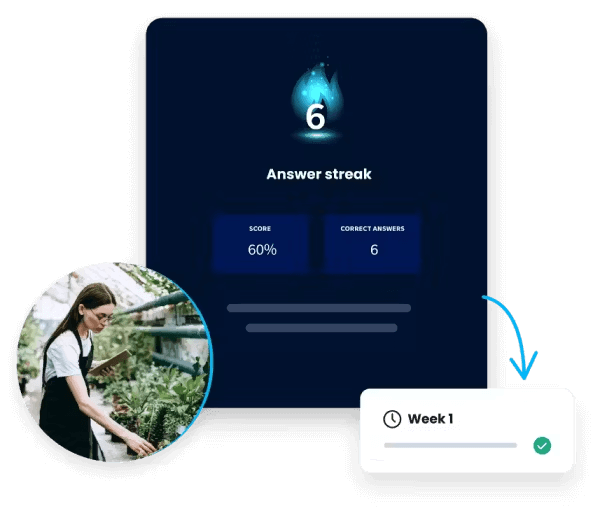
Studies on spacing for science curriculums have shown that spacing is effective for long-term knowledge retention, which is important for every skill. Elearning solutions have begun to integrate this principle into their technology.
For example, EdApp has a feature called Brain Boost. After every course, review quizzes are regularly sent to learners at algorithmically set intervals, depending on how well they do in the course.
Spaced repetition simply applies the same principles of reviewing lessons when we were in school but at much more strategic intervals.
10. Auditory learning
Aural learning is also under auditory learning. Some learners absorb knowledge best simply by listening and not even taking notes. Modern learners listen to music, talks, podcasts, and even audiobooks instead of reading or interpreting visual information.

If you're an auditory learner, you would love to listen to people talk about their thoughts and give your own input. Articulating information to another person allows you to process what you’ve learned much better.
So, at work don’t hesitate to equip your teams with learning resources in podcasts and audio-based media. Have a space where your teams can converse about important learning topics. Conversations are also a very low-pressure environment, there’s no need to impress anybody.
And if you look back, sometimes don’t you remember things people mention in passing? Especially because they stuck to you? That’s why conversations are so powerful.
11. Storytelling
Storytelling is a great way to keep your learners engaged and invested in whatever topic it is you’re teaching. Studies suggest that learners retain knowledge presented in a narrative much more easily than in clunky PowerPoint slides. There’s a reason storytelling has been the primary mode of instruction for centuries!

12. Online simulations
Simulations are immersive learning experiences where learners will get a taste of real-life work scenarios. Depending on the role, you can do simulations through online learning courses, in-person demos, and now with the power of AI through conversational AI language models. For remote learners, simulations are a great way to train without the need to be on-site.

13. Just in Time Training (JITT)
JITT is any kind of training available when your learners need it. For example, if your team members want to learn about safety topics they can simply search your learning platform (EdApp for example) and take the training right then and there. Just in Time Training (JITT) is made easier with online elearning tools like learning management systems where training content is simply within reach.

14. Problem-solving
Problem-solving is one of the most practical and effective instructional techniques because it’s results-oriented. When learning managers foster a solutions-focused culture at work, more employees become proactive and innovative. More work will be done when learners are focused on solving problems. Learning through problem-solving also strengthens employees’ critical thinking and creativity which will set your teams apart in the long run.

15. Drills
Drills are a kind of learning strategy that uses repetition to reinforce learning. Most drills are done with flashcards, but with modern technology, you can automate drills in your training programs.
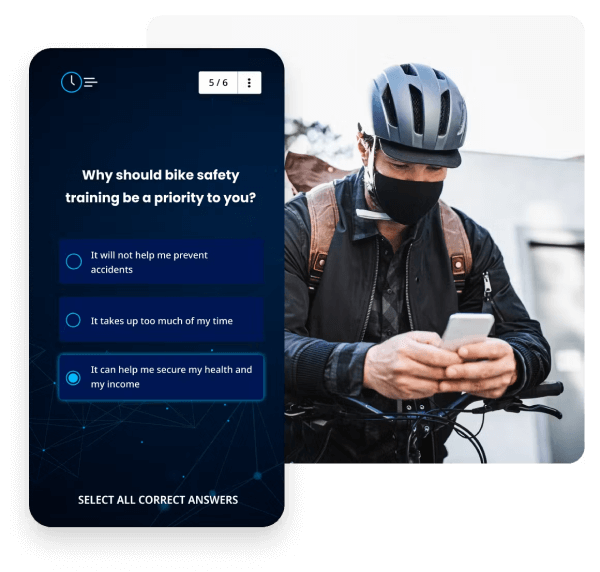
For example, EdApp has a Rapid Refresh feature where AI will automatically recommend refresher quizzes to learners based on their performance. They’ll be sent quizzes in given intervals depending on how well they do on the quizzes.
Why is instructional strategy important for workplace training?
In a 2023 report, LinkedIn shared that the center of an organization’s success is its people’s careers. Continuously learning individuals will thrive and succeed in an economy that’s always shifting. They call this agility. This means that learning and development are as crucial as ever, as they’ll spell the success of your business. And on the employee’s side, people are as hungry as ever to learn new skills to reach their full potential.

Instructional strategies based on sound science, research, and personal experience will help you train better. 59% of employees in 2023 claimed that they lacked workplace training and resorted to self-teaching for important work skills. That’s a big number. Imagine how productive your employees would be if they didn’t have to think about training themselves! Effective workplace training will keep your employees knowledgeable, satisfied, and just more efficient.
5 tools to use with your instructional strategies
Now that we’ve talked about some teaching strategies examples to integrate into your workplace training, let’s dive into some easy and accessible tools that you can use to improve your next training program and make your life easier.
E-learning tools
E-learning tools were designed by experts who have studied instructional design, psychology, and learning sciences to create effective solutions to simple learning problems. For example, accessible courseware that utilizes microlearning is game-changing for workplaces with teams that are on the go.
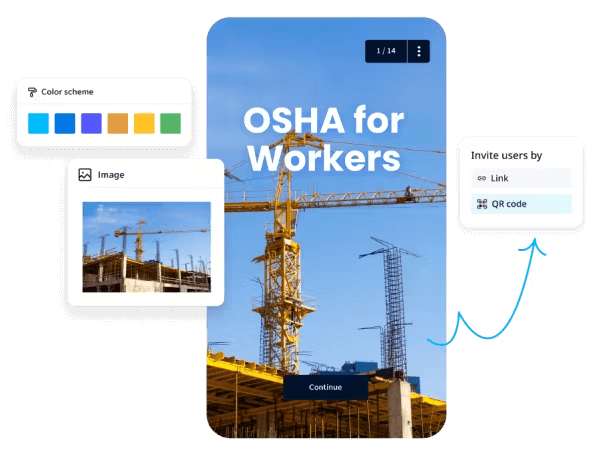
There are a lot of amazing online learning tools available for free too, like EdApp. It’s got everything from learning content to reporting and analytics for learning managers. Tools like this do the heavy lifting, so you can focus on more important things! Try it for yourself—it’s free—and see how it helps you!
Online course builders
Course builders are tools where you can directly create and deliver interactive multimedia training lessons. Usually, these software have built-in templates designed for learning content. These save you the trouble of designing and building effective lessons from scratch.
The meat of training boils down to the learning content which is usually delivered through courses. So, you’d want your course builder to be completely customizable so you can add your materials and even update the content whenever necessary.
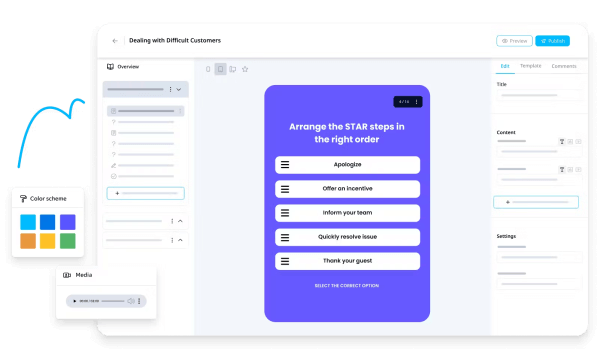
Some learning management systems (LMS) even offer course creation services where you can collaborate with experienced instructional designers to help build beautiful courses for you. Or, if you’re pressed for time, EdApp has a brand new AI create feature where you can build courses with a click of a button, no research or brainstorming necessary. Whichever style works best for you, there are always a lot of options out there.
Quiz maker tools
Quizzes are always a simple and easy way to engage your learners in any subject. So, if you’re not looking for whole courses, maybe a quiz maker is for you. Most online quiz maker tools simply ask you to upload questions or templates and it’ll build everything for you. It’s a great way to integrate gamification in a quick and hassle-free way.
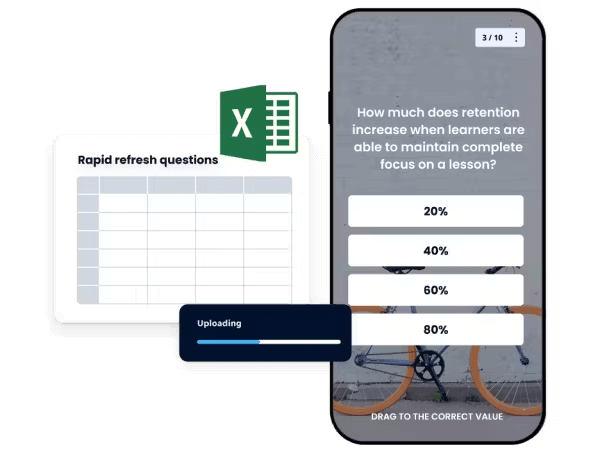
Virtual conferencing tools
Make sure to invest in video conferencing tools like Zoom or Google Meet because this is primarily where blended learning, webinars, and other virtual instructional strategies can be applied. More particularly, Zoom has a wide range of integrations and interactive tools that can help facilitate different kinds of discussions. Try the whiteboard feature for a more collaborative experience!

And if your teams are on Slack and Discord, there are also a lot of fun games you can play to integrate into training. Technology is so advanced these days, explore the possibilities!
Digital learning paths
Think of a digital learning path as a learner's training journey. It’s a step-by-step development plan that a trainer and individual collaborate on. This is so important because goals and learning outcomes decide how effective training will be. Having a path will also motivate learners to achieve their objectives and learn much more effectively. A personalized learning path also considers a learner’s style and pace, because everyone learns differently.
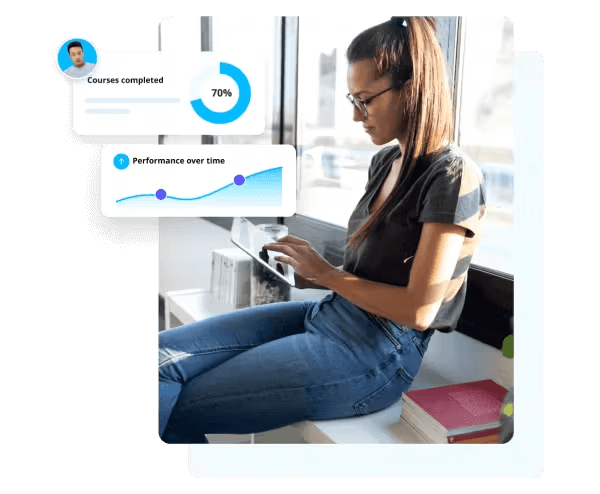
A digital learning path is a plan integrated into a learning management system, so you don’t have to do it yourself as a trainer. With an LMS like EdApp, you can set which courses will be delivered to your learners based on the learning paths set. You can also set up spaced repetition quizzes to reinforce learning and more. Tools like these just make life so much easier and guarantee the success of your training.
Conclusion: Think about your learners and train strategically today
Instructional strategies are just solutions to learning problems. Our hot tip is to get to know your teams and learners well to better help them with their training needs. Yes, there are tools for that but personalizing and empathizing are key to a healthy learning environment. It may all sound technical, but at the end of the day, it’s all about learning. So, talk to your teams and find an instructional strategy that works for them today!
Try microlearning as an instructional strategy today! Sign up for EdApp—it’s free forever.
Subscribe to our blog newsletter
Author
Alec Bailon
Alec is an eLearning expert for EdApp, a pioneer LMS that designs creative mobile workplace training solutions. On the off days, they enjoy cooking, reading, or finding a live show or play to watch.
